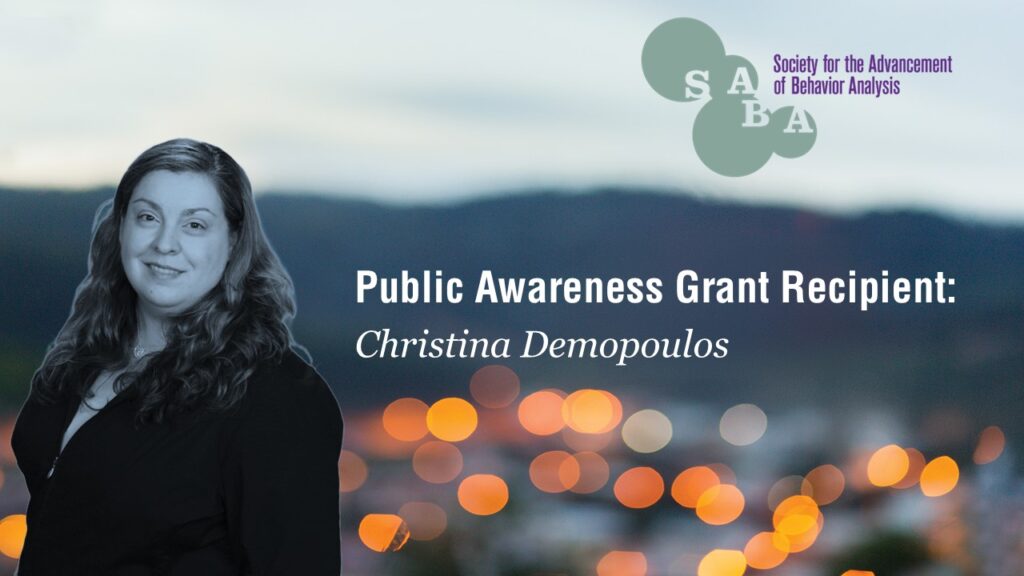Public Awareness Grant Recipient: Christina Demopoulos

In the context of the dental profession, research provides sufficient evidence that a behavioral approach to resistance to dental treatment can be effective in reducing the patient’s physical resistance during dental treatment, thus allowing the treatment to be completed. In addition, a behavioral approach can be implemented in combination with desensitization techniques to create a more comfortable environment for the patient. Sharing pamphlets, brochures or videos that describe the dental office, supplies and procedures can also help create a more comforting environment. The behavior process can strengthen the patient provider relationship and develop the foundations of a patient-centered environment. Therefore, it is important that future dental providers are aware of proactive behavioral strategies to not only limit the use of medications and other aversive procedures, but to help relieve anxiety so that patients will have less anxiety and fear at future visits.
The purpose of this project supported by the Society for the Advancement of Behavior Analysis (SABA) is to develop and distribute a pamphlet to dental providers and dental students. The project lead will develop a listserv of dental providers that are interested in providing or learning about implementing applied behavior analysis (ABA) strategies into their practice. This innovative approach to the application of ABA principles and concepts in dental settings is unique to Nevada and many other states. The following aims will be accomplished through this project: Aim 1: Develop a pamphlet for dental providers and dental students that outlines the ABA principles and concepts that can be safely adopted in a dental setting. Aim 2: Build a listserv of dental providers and dental students with an interest in applying ABA principles and concepts in their dental practice. Aim 3: The listserv will aid in the development of a focus group to discuss the ABA principles and concepts in more detail with implications in dental settings. Aim 4: A final product will be a presentation/workshop to distribute the pamphlets and discuss its use as a resource guide for a dental setting.


